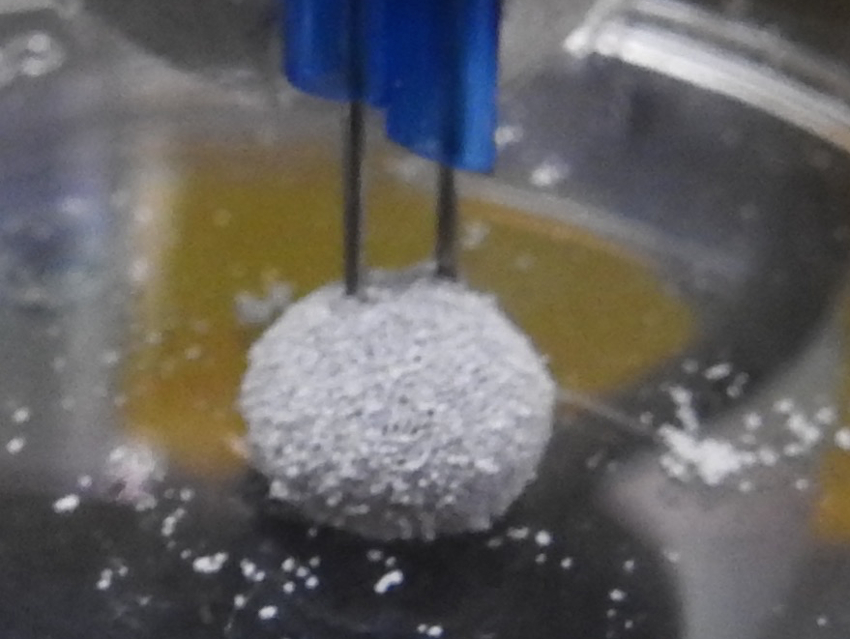The Belousov–Zhabotinsky (BZ) reaction is an oscillating chemical process in which transition-metal ions catalyze the oxidation of organic reductants by bromic acid. The properties of BZ media have been explored to develop a range of unconventional computing devices including, e.g., diodes, logical gates, and filters.
However, BZ-based computing devices have limitations: they are liquid and, thus, require containers. An ideal approach would be to make BZ droplets “dry” while achieving controllable oscillation dynamics. This can be done by encapsulating a BZ solution in a “liquid marble”—a liquid droplet coated by a hydrophobic powder. The liquid marble does not wet adjacent surfaces and can, therefore, be manipulated like a dry, soft body.
Andrew Adamatzky, Unconventional Computing Laboratory, University of the West of England, Bristol, UK, and colleagues have developed a photosensor using BZ liquid marbles. They inserted electrodes into a liquid marble prepared from a BZ solution and coated with a polyethylene powder. The electrodes recorded a potential difference, which oscillated due to oxidation wave-fronts crossing the electrodes.
When the BZ marble was illuminated by a light source, the oxidation wave-fronts were hindered due to the reaction’s light-sensitivity and the electrical potential stopped oscillating. The researchers characterized the responses of the BZ marble photosensors to various stimuli. They believe their devices might have applications in the fields of liquid electronics, soft robotics, and unconventional computing.
- Liquid Marble Photosensor,
Andrew Adamatzky, Michail-Antisthenis Tsompanas, Thomas C. Draper, Claire Fullarton, Richard Mayne,
ChemPhysChem 2019.
https://doi.org/10.1002/cphc.201900949

